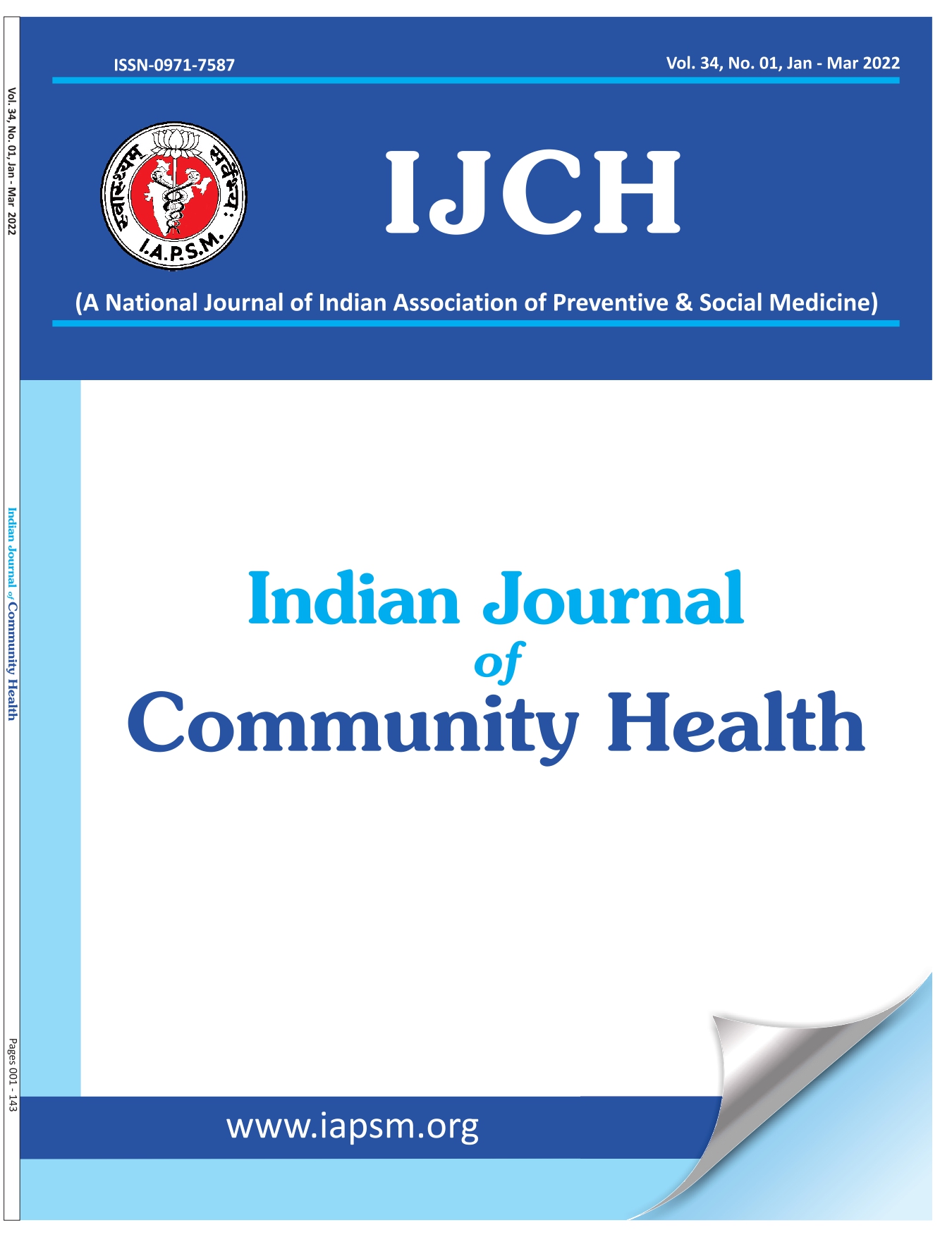Assessment of Selfie addiction among undergraduate medical Students
DOI:
https://doi.org/10.47203/IJCH.2022.v34i04.007Keywords:
Selfie, Narcissm, Selfitis, Psychosocial EffectAbstract
Background: Selfie’ means “A photograph that one has taken of oneself or a self portrait photograph typically taken with a smart phone or digital camera and shared via social media”. Considering the dependency on Internet and selfie taking behavior among professional students, the study was undertaken. Aims and Objective- to determine the demographic profile of selfie users and different variables related to selfie taking and posting and its association with risky dangerous selfie. Material and Methods: A cross-sectional study conducted among 220 undergraduate medical students were using smartphone. Data was collected and analyzed using SPSS version 21. Results: Male students of middle class family of urban areas were more involved in taking selfie. Females were comparatively spending more time (2-3 hrs) on Internet (X2 =19.494 and p = .001).Total 14% students were taking 3-5 selfie and posted on social media(Statistically significant,X2 =7.882,p =0.019). 19(8.63%) participants admitted of taking dangerous selfie of which male 13(14.0%) more than female 06(8.4%). Conclusion: Age and gender affects the number of selfies one clicks. This is developing a new mental disorder ‘selfitis’ as well as desire to take dangerous selfie. There is need of health awareness programme, IEC regarding importance of healthy life style.
Downloads
References
Dictionary.O.E.(2008),Oxford English Dictionary.[Available from: http://en.oxforddictionaries.com/definition/selfie ].(Last assessed on 18/12/2022)
Balakrishnan J, Griffiths MD. An exploratory study of “selfitis” and the development of the selfitis behavior scale. Int J Ment Health Addiction.2018;16(3): 722–36
Katz JE, Crocker ET.selfies and photo messaging as visual conversation: Reports from the United States, United Kingdom and China. International Journal of Communication. 2015;9(12): 1861–72.
Priyanka A, Rao P. Exploring correlates of selfitis and narcissism among Indian adolescent. Clin Psychiatry 2020;6(1):1-2
Dutta E, Sharma P, Dikshit R, Shah N, Sonavane S, Bharati A, et al. Attitudes toward selfie taking in school-going adolescents: An exploratory study.Indian J Psychological Med. 2016;38(3):242–5.
Nagaraju R, Chikkegowda LK. Selfie: A Rising Culture. Assessment of SelfitisAnd Its Relation with Self-Esteem Among Medical and Nursing Students: A Cross-Sectional Study. National J Community Med. 2019;10(5):285–9.
Dokur M, Petekkaya E, Karadagi M. Media-based clinical research on selfie related injuries and deaths. Turkish J Trauma Emerg Surg. 2017;24(2):129–35
Bansal A, Garg C, Pakhare A, Gupta S. Selfies: A boon or bane? Journal of Family Medicine and Primary Care. 2018;7(4):828–31.
Jain MJ, Mavani KJ. A comprehensive study of worldwide selfie-related accidental mortality: a growing problem of the modern society. Int J Injury Control Safety Promotion. 2017;24(4):544–9.
Senft TM, Baym NK. What does the selfie say? Investigating a global phenomenon. Int J Commun. 2015;9(19):1588–606.
http://www.urbandictionary.com/define.php?term=selfie-obsessed . (Last accessed on 18/12/ 2022).
Fox J, Rooney MC. The dark Triad and trait self objectification as predictors of men’s use and self-presentation behaviors on social networking sites. PersIndivid Differ 2015;76:161-5.
The Selfie Syndrome Published on Tuesday, 07 January 2014: 19 Written by Toni Ann Berardo. Available from: http://www.news.hamlethub.com/ rivertowns/life/139-the-selfie-syndrome. (Last accessed on 18/12/2022).
Dhir A, Pallesen S, Torsheim T, Andreassen CS. Do age and gender differences exist in selfie-related behaviours? Comput Human Behaviour.2016;63(C):549–55.
Flaherty GT, Choi J. The ‘selfie’phenomenon: reducing the risk of harm while using smartphones during international travel. J Travel Med. 2016;23(2):1–3.
Sorokowski P, Sorokowska A, Oleszkiewicz A, Frackowiak T, Huk A, PisanskiK.Selfie posting behaviours are associated with narcissism among men.Personality Individual Differences. 2015;85:123–7.
Lee JA, Sung Y. Hide-and-Seek: Narcissism and “Selfie”-Related Behaviour.Cyberpsychology Behavior and Social Networking. 2016;19(5):347–51
Fox J, Rooney MC. The Dark Triad and trait self-objectification as predictors of men’s use and self-presentation behaviours on social networking sites.Personality Individual Differences. 2015;76:161–5.
Trudy HHC, Leanne C. Follow me and like my beautiful selfies: Singapore teenage girls engagement in self-presentation and peer comparison on social media. ComputHuman Behavior. 2016;55(Part A):190–7
GaddalaA. , Kumar H. , Rajamouli K J, Pusphalatha C. A Study on Various Effects of Internet and Selfie dependence among Undergraduate Medical Students June 2017;5(2):29-32
Saroshe S, Banseria R, Dixit S, Patidar A. Assessment of Selfie Syndrome among the Professional Students of a Cosmopolitan City of Central India: A Cross-sectional Study. Int J Prevent Public Health Sci 2016;2(2):1-4.
Dr. Pankaj B. Shah. Selfie –a New Generation Dependence Disorder-Literature Review and Updates International Journal of Emergency Mental Health and Human Resilience 2015;17(3):602.
https://en.wikipedia.org/wiki/List_of_selfie-related_injuries_and_deaths#2016.(Last assessed on 18/12/2022)
Ahmed AN, Balasubramaniam J, Barveen A, Henry J DX. Selfitis affects concentration of the higher education students during lecture hours. In: 2019 International Conference on Computational Intelligence and Knowledge Economy; 2019:746-51.
Downloads
Published
How to Cite
License
Copyright (c) 2022 Som Nath, Manjusha Nath, RAJESH KUMAR

This work is licensed under a Creative Commons Attribution-NonCommercial-NoDerivatives 4.0 International License.





